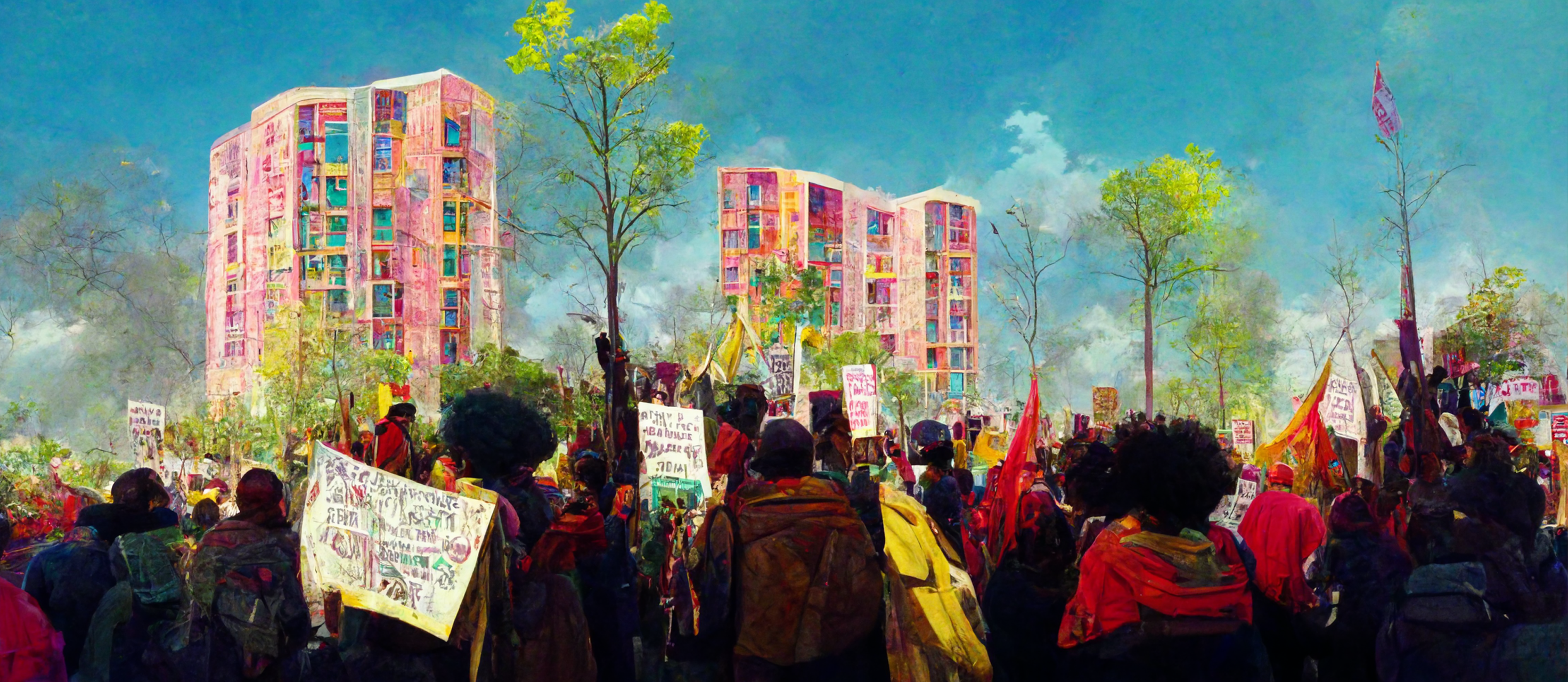
Spatial Reparations

Join the Spatial Futures Fellow: Reparative Housing Futures and Land Justice
Welcome to the Spatial Futures Fellowship, where we're shaping a more just future for housing, land, and communities. Space and place are political, and for too long, they have been structured in ways that limit the resources and possibilities available for Black, Brown, and Indigenous communities. This initiative asks what our futures can look like when space is structured toward justice. The Spatial Futures Fellowship is committed to foregrounding reparative approaches to addressing environmental and spatialized racism's harmful impacts on marginalized communities. In our inaugural year, we're establishing a transformative learning community centered on reparative spatial justice frameworks.
SFF will serve as an incubator for housing and land justice leaders dedicated to infusing a "Reckoning, Repair, and Transformation" approach into their work and the broader ecosystems they influence. This methodology foregrounds the advancement of reparative justice policies, regulations, and standards, which recognize and rectify environmental and spatialized racism and its harmful impacts on Black, Brown, and Indigenous communities. Through this work, we are testing and scaling innovative interventions, advocating for federal reparative land and housing policies, and forging new models for public and private investment in communities.
text2000divider0
The 2015 AFFH rule provided a structured process to change the trajectory of growing poverty and inequality. The AFFH rule and the Assessment of Fair Housing (AFH) planning process (which the rule created) helped HUD grantees weave together housing, health, transportation, education, environmental and economic development approaches that support the transformation of areas of concentrated poverty into thriving communities. The AFH process also is designed to recognize the connection between housing and the ability of individuals and families to access opportunities. Furthermore, the 2015 AFFH rule fostered the design of approaches that promoted access to housing that is affordable in communities with high-performing schools, clean air, reliable transportation choices, and access to workforce opportunities and good jobs.
The 2015 AFFH rule provided local leaders with resources to support their planning success in the form of guidance, a data and mapping tool, and technical assistance. The locally-driven AFH process supports communities to address growing disparities in opportunity, fair housing choice, and racially concentrated poverty.
Key aspects of the 2015 AFFH Rule:
- Equipped local communities for decision-making by providing local officials with a Data and Mapping tool and other analytical tools informed by data from the Census Bureau, other federal agencies, and best practices: This data equipped HUD grantees to better analyze patterns, trends, and conditions. Grantees are encouraged to gather additional local data and knowledge to ensure that the full local context and conditions inform the analysis.
- Fostered rich community participation, ensuring that the experiences and perspectives of community members inform the assessment process.
- Guided jurisdictions on how to better align federal funding: Recipients of Community Development Block Grants, HOME funds, public housing financing, other HUD funds, and other federal, state, and local resources received guidance to address the housing and economic inclusion challenges identified in the assessments of fair housing.
- Promoted a more effective relationship between federal investments and housing choice and access: The rule encouraged the integration of local planning processes through the incorporation of strategies developed during the AFH process into the Consolidated or Public Housing Authority Plans.
- Supported and facilitated locally designed solutions: Local governments developed solutions to fair housing choice and barriers to opportunity through an integrated planning approach that helped HUD grantees leverage expertise and resources through collaboration with a broad range of stakeholders (e.g. developers, banks, universities, advocacy groups, nonprofits and health providers, and other units of government).
- Promoted Jobs and Workforce Development: The 2015 AFFH rule helped jurisdictions plan affordable housing located near transit that connects to job centers in opportunity-rich communities. It also focused revitalization efforts in distressed communities in a manner that co-located affordable housing with community and economic development, workforce development, and job placement services.
- Shaped through Extensive Piloting: The 2015 AFFH rule was piloted by 74 HUD grantees through the Fair Housing and Equity Assessment (FHEA). To test the effectiveness, the FHEA modeled many components of the AFFH including; guidance, data, mapping, stakeholder collaboration and consultation, and robust community participation.
Updates
Affirmatively Furthering Fair Housing update [March 31, 2018]
Webinar Archives
- Advancement for Equity: The Game Changing Rule Coming from HUD [May 20, 2015]
- A Pivotal Step Toward Opportunity: The Affirmatively Furthering Fair Housing Rule [September 8, 2015]
- Breaking Down Barriers to Opportunity: Transportation and the Affirmatively Furthering Fair Housing [August 17, 2017]
- How 3 Communities are Implementing HUD’s Affirmatively Furthering Fair Housing Rule [April 20, 2017]
- Our Housing Futures: Proposed AFFH Rule 101 [February 8, 2023]
- Our Housing Futures: Proposed AFFH Rule Comment Party [February 28, 2023]
Articles
How Obama’s New Housing Rules Help Fight Modern-Day Segregation With Ben Carson at HUD, America’s Cities Really Could Become Hellholes [December 7, 2016]


 /presentation/d/1OjQ8PPfSdUlBqz2Rg8sLcQZ8MdZuuiaD/edit#slide=id.p1
/presentation/d/1OjQ8PPfSdUlBqz2Rg8sLcQZ8MdZuuiaD/edit#slide=id.p1 